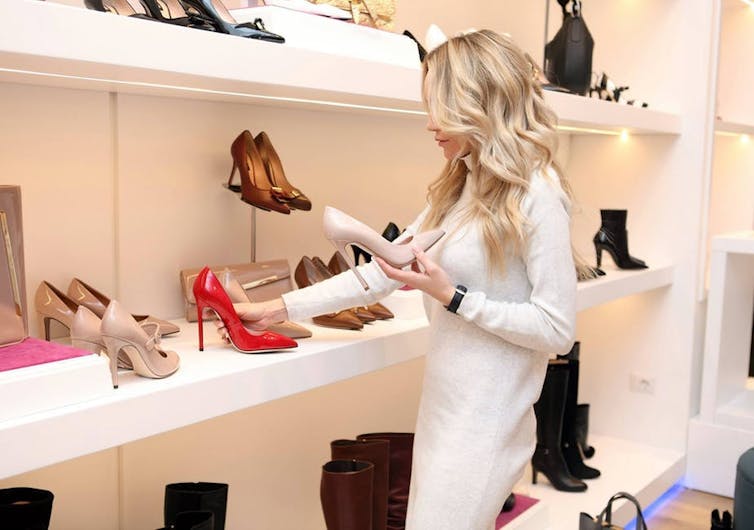Compulsive buyers purchase to relieve stress, gain social approval, and improve their self image.

Many people will have hit the shops or gone online to bag a bargain in the January sales over the last few weeks and may now be feeling the pinch until their next payday. It is an annual tradition for some – with tales of shoppers getting up in the middle of the night to secure the latest bargain. For other people though, shopping is not something that can be easily controlled – and is used as a coping mechanism for anxiety and low self-esteem.
These compulsive shoppers are unable to resist strong inner urges to make repeated purchases and to spend excessively – even when they can’t afford to do so, or have no use for the product they buy.
Recent research indicates that compulsive buying behaviour affects almost 5% of the adult population in developed countries – particularly young women in low income groups. And the condition is on the rise, with latest estimates indicating that around 14% of people have a mild form of the condition.
Shop till you drop
While we’re all familiar with impulse buying – from picking up a chocolate bar at the checkout to having a blowout on pay day – compulsive buying behaviour is very different.
When most people buy things they’re generally motivated by value and usefulness. Whereas compulsive buyers purchase to relieve stress, gain social approval, and improve their self image.
This type of shopping is a behavioural addiction characterised by a reduced capacity for self control and a lower resistance to external triggers. It causes serious psychological, social and financial consequences for sufferers and their families.

Most compulsive shoppers are women. Pexels
My research with Agata Maccarrone-Eaglen at Salford Business School used samples from the UK, Spain, China and the Czech Republic to develop a new screening tool to diagnose this disorder. The tool uses seven behavioural statements. If a respondent strongly agrees with the statements, it could be an indication of compulsive buying behaviour.
The results indicate that it screens more effectively for compulsive buying behaviour than existing diagnostic tools, and also distinguishes between mild and severe forms of the condition.
Ultimately, our aim is that using the tool, people with compulsive buying disorder will get diagnosed sooner, so they can access the help they need.
Serious addiction
Our research found the condition was more prevalent in the UK than in the other countries we looked at, and more so among young adults –particularly women. This may well be because at this age, excessive behaviour is often socially acceptable among peers so the condition may go unrecognised for longer. And access to more credit facilities nowadays is likely to aggravate the situation. Indeed, a recent study found that at least 70% of the UK’s working population are “chronically broke”, with many falling into credit card debt for everyday spending.
The consequences of compulsive buying behaviour can be just as severe as other types of addiction – such as alcoholism and problem gambling – with people falling into serious debt and their relationships falling apart. But unlike these addictions, there is no national charity dedicated to compulsive buying.
This is why it’s important that GP’s and other health professionals recognise the addiction, and offer support such as cognitive behavioural therapy. Because it is only through diagnosis and then treatment that the growing number of people who are afflicted with this condition can hope to restore balance to their lives.
Peter Schofield, Senior Academic in the Department of Service Sector Management, Sheffield Hallam University
This article is republished from The Conversation under a Creative Commons license. Read the original article.
For more news your way, download The Citizen’s app for iOS and Android.






